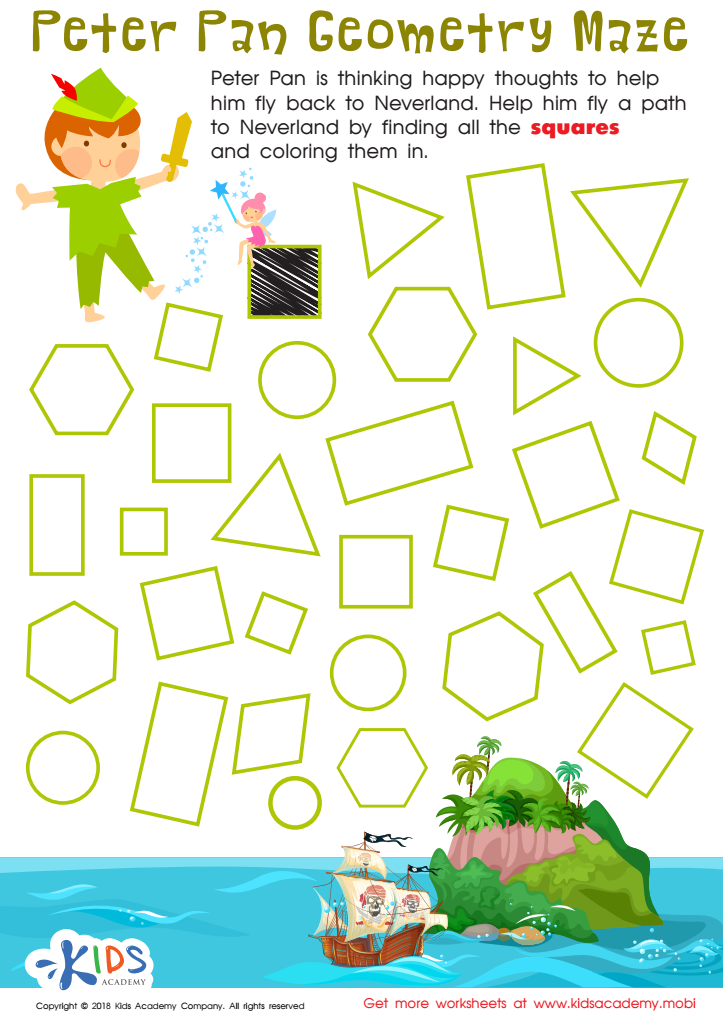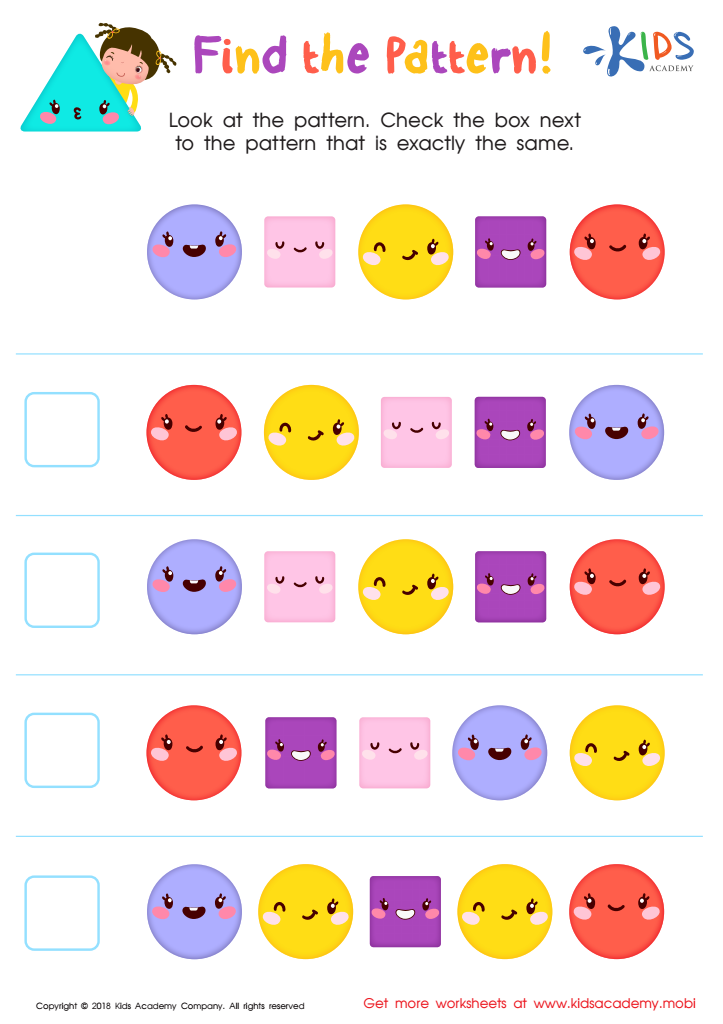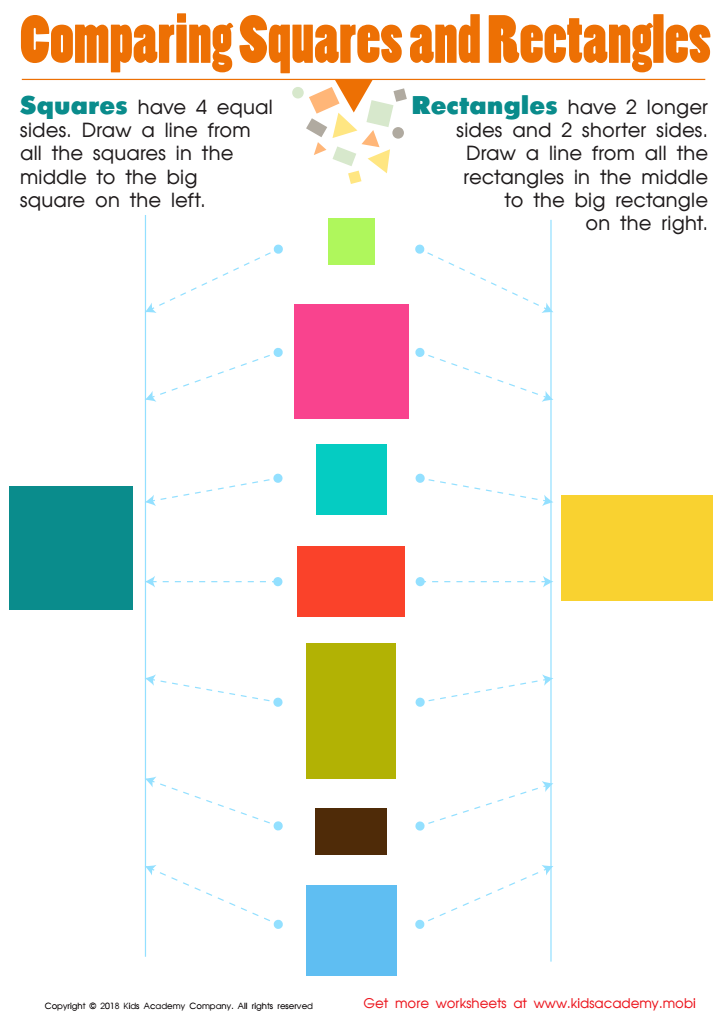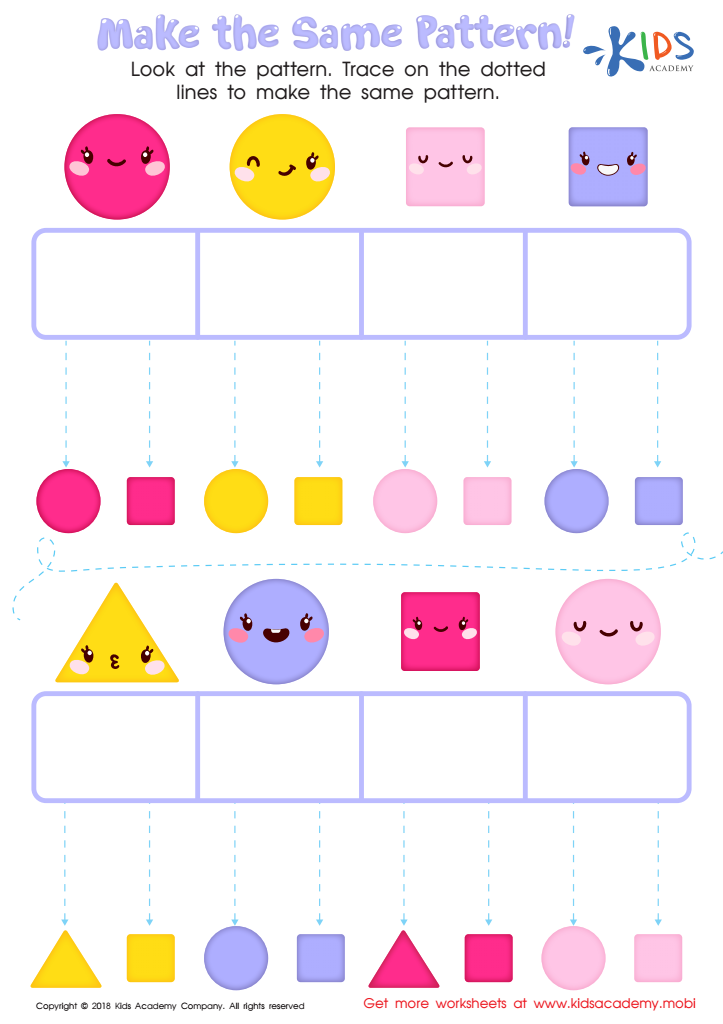Critical Thinking Normal Geometry Worksheets for Ages 3-8
5 filtered results
-
From - To
Enhance your child’s critical thinking skills with our engaging Normal Geometry Worksheets designed for ages 3-8. These worksheets introduce foundational geometric concepts through fun, age-appropriate activities that stimulate logical reasoning and problem-solving. Each worksheet encourages exploration and creative thinking, helping young learners to identify shapes, understand spatial relationships, and relate geometry to the world around them. Our printable resources are perfect for at-home learning or classroom use, ensuring children develop essential skills while enjoying hands-on learning experiences. Foster a love for math and geometry from an early age with our thoughtfully crafted worksheets aimed at nurturing critical thinkers. Get started today!


Peter Pan Worksheet


Find the Pattern Worksheet


Comparing Squares Rectangles Worksheet


Make the Same Pattern Worksheet


Using Squares to Make Rectangles Worksheet
Critical Thinking Normal Geometry for ages 3-8 is essential for young learners as it lays the foundation for their cognitive development and problem-solving skills. At this age, children are naturally curious, and introducing geometry as a critical thinking tool enhances their ability to recognize patterns, shapes, and spatial relationships in their environment.
Parents and teachers should care about this approach because it fosters essential skills like analysis, comparison, and logical reasoning, which are crucial as children progress in their education. Engaging with geometric concepts helps children learn how to approach problems methodically, evaluate different solutions, and think creatively.
Moreover, a strong grasp of geometry reinforces mathematical understanding, which is integral in many areas of learning beyond mathematics, such as art, science, and engineering. Instilling these skills at a young age prepares them not only for advanced academic challenges but also equips them with the confidence to navigate everyday problems.
By prioritizing critical thinking and geometry, parents and teachers create a rich learning environment that promotes life-long skills, encouraging children to become thoughtful, innovative individuals who can contribute positively to society. Investing in these early experiences will pay dividends as children continue their educational journey.
 Assign to My Students
Assign to My Students

















